Episode 11, 40 min listen
In this episode we discuss racial truth and reconciliation. We interview Dr. Feliccia Smith and Ms. Ellen Stevenson, the co-directors of the Community Remembrance Project of Greenville County, S.C, and we learn about the Equal Justice Initiative in Montgomery, AL and their Memorial for Peace and Justice.
AUDIO PLAYER
Listen on Apple Podcasts or Listen on Spotify
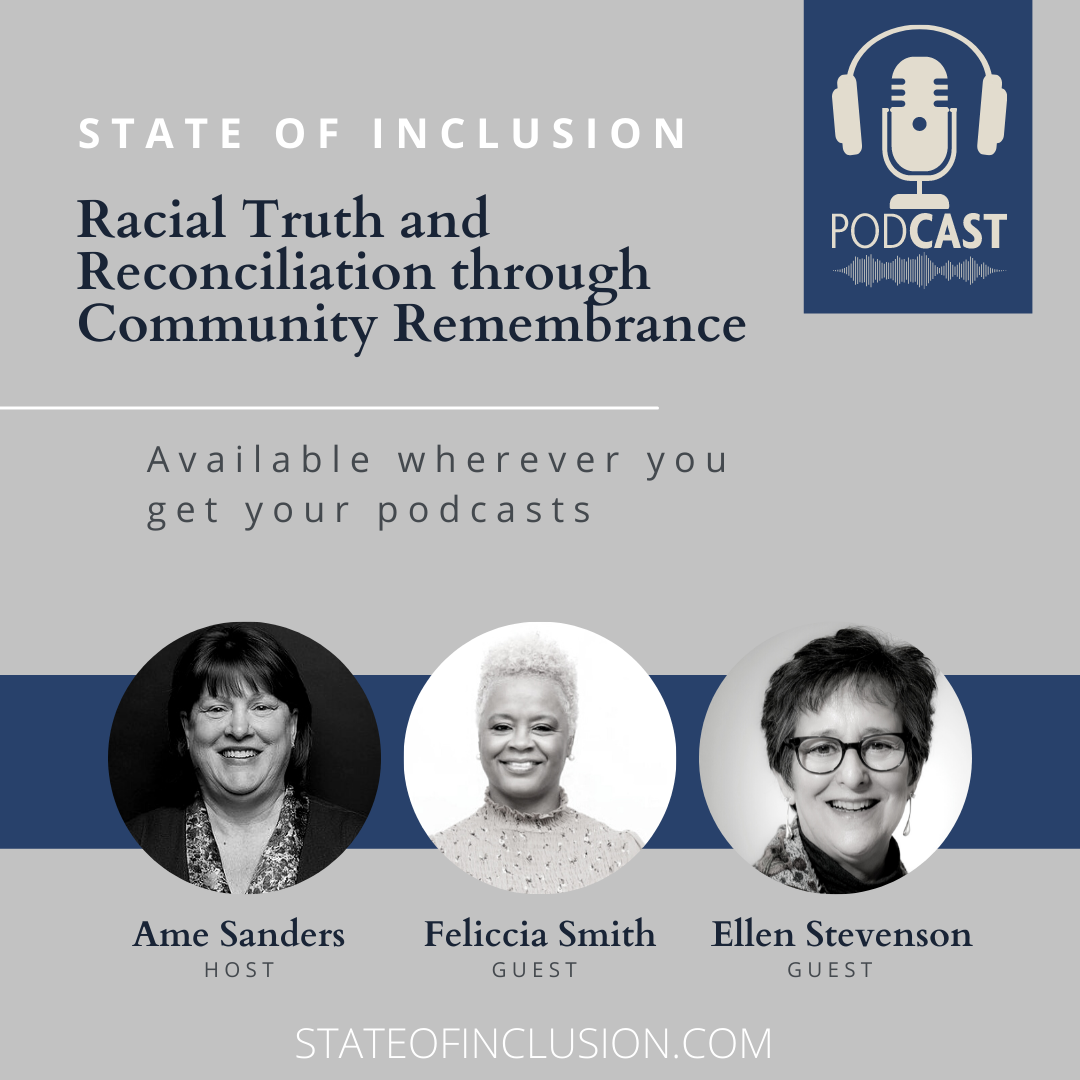
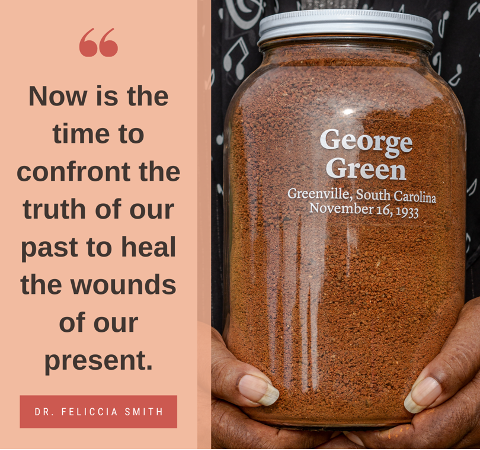
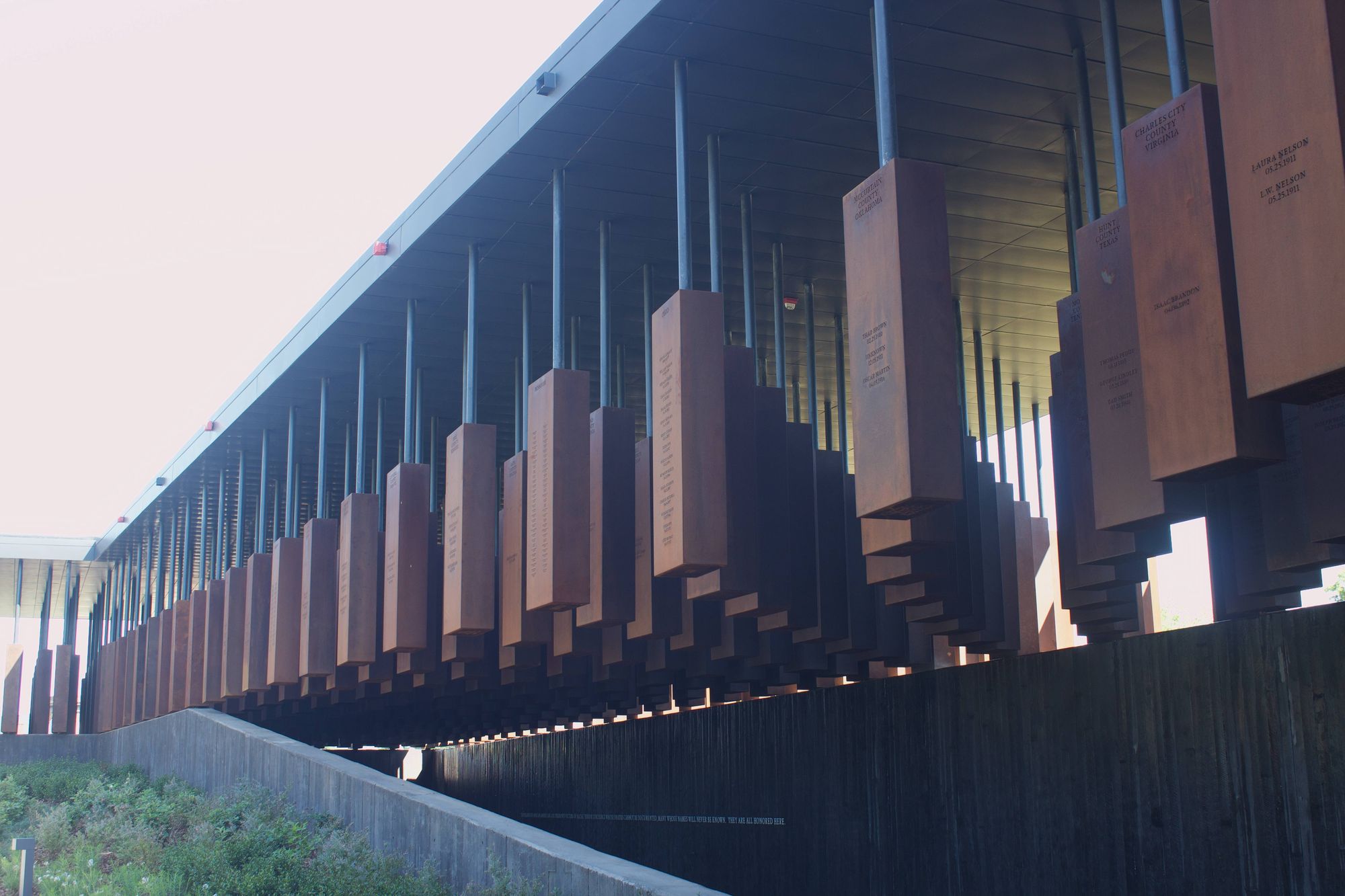
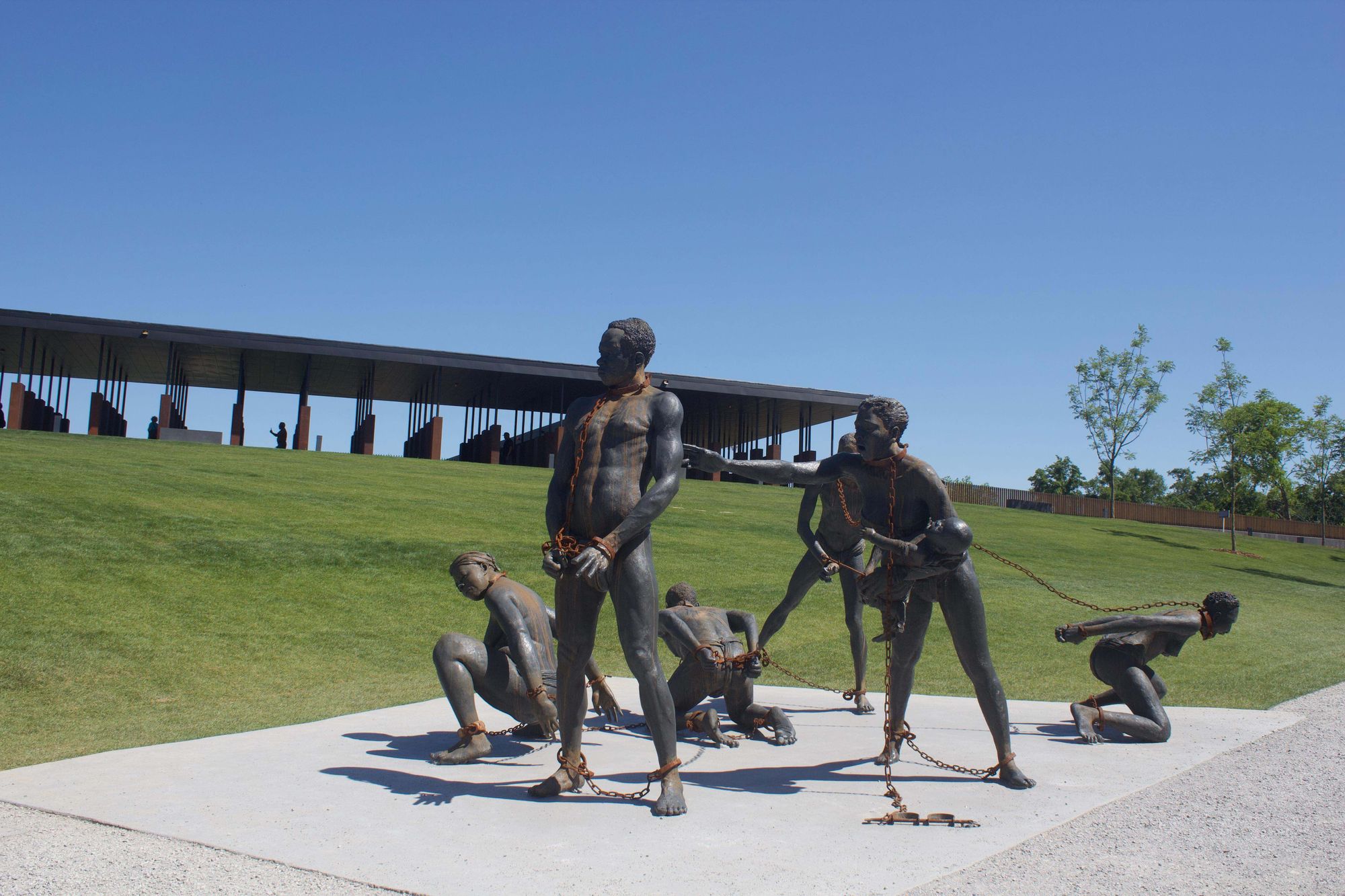
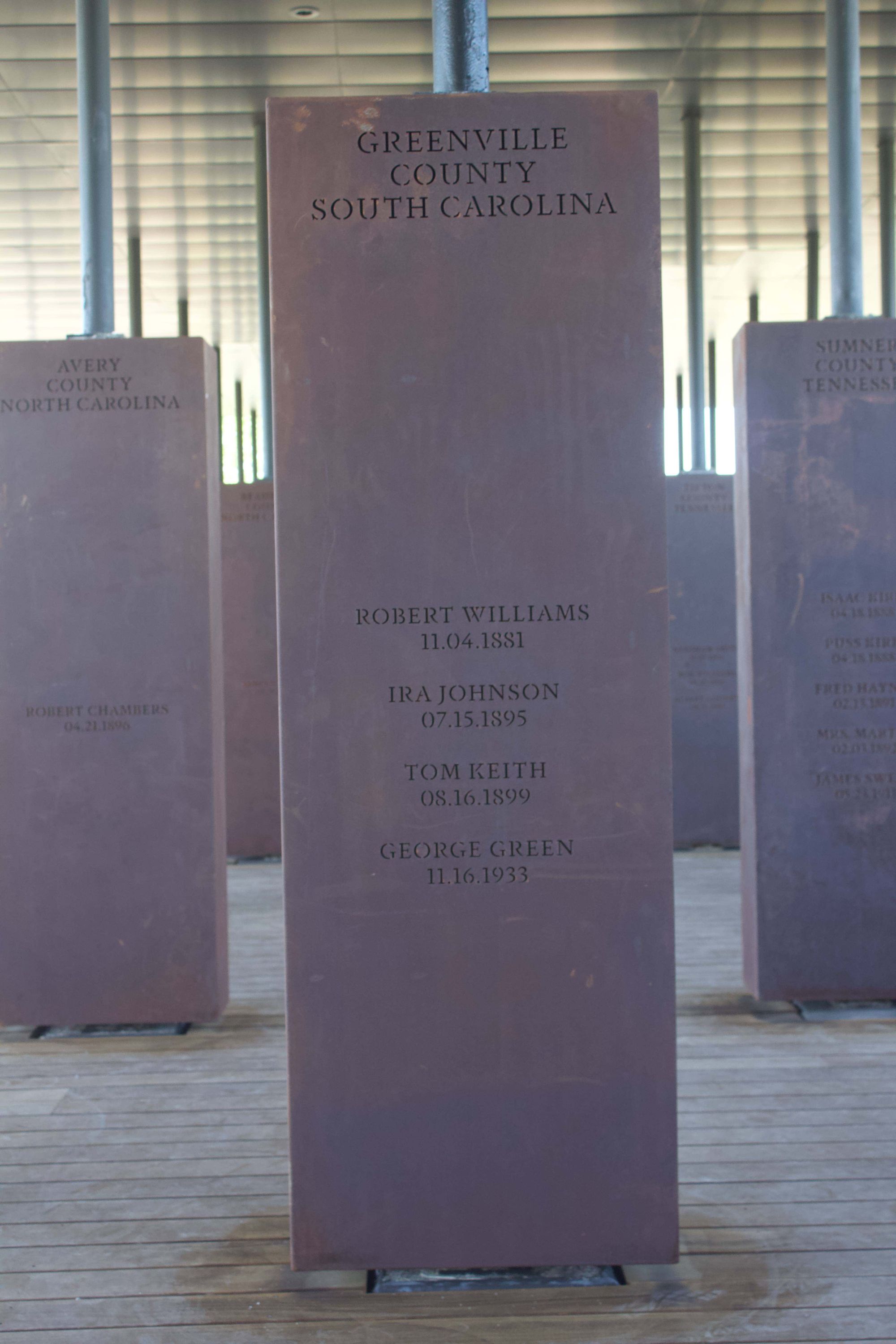
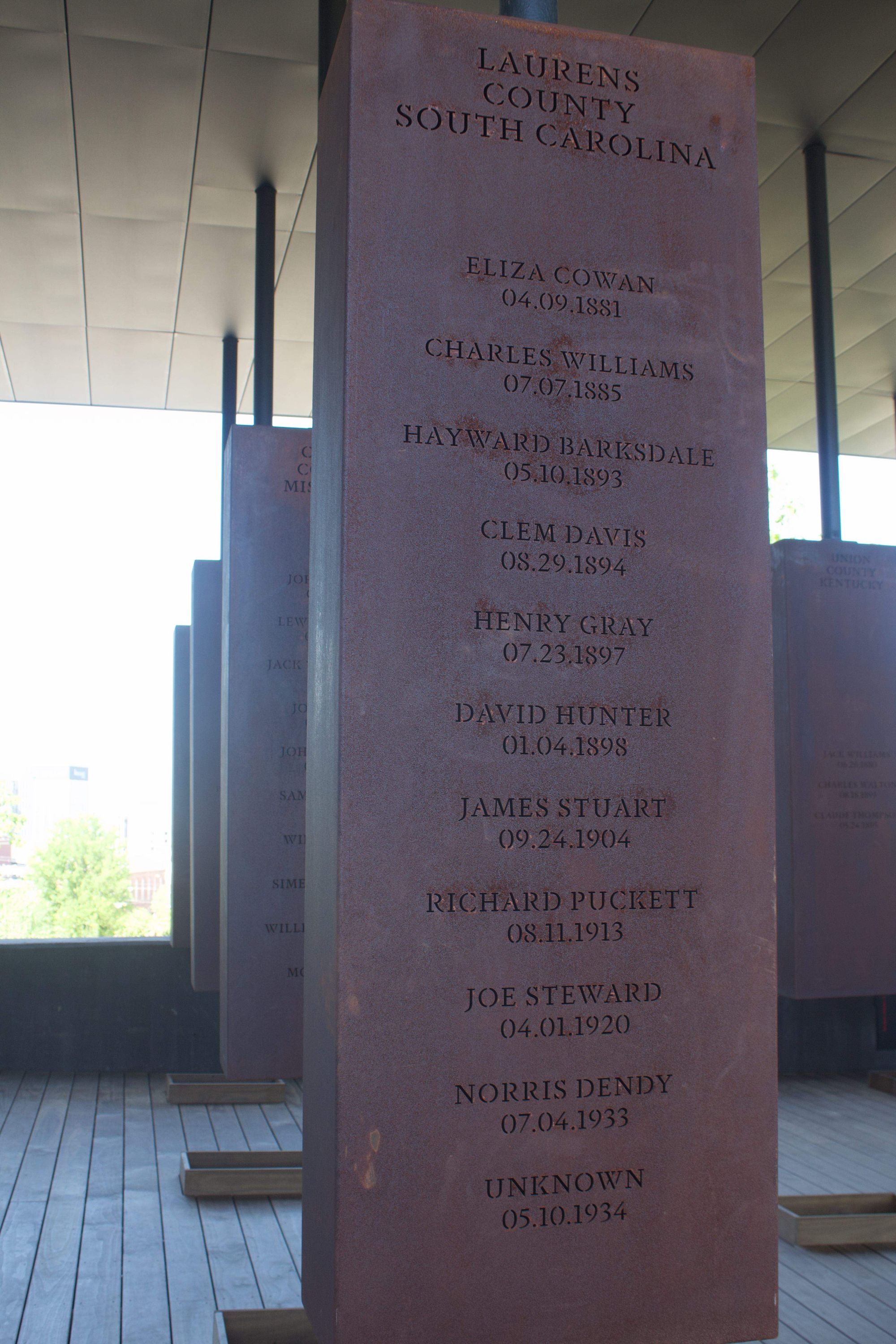
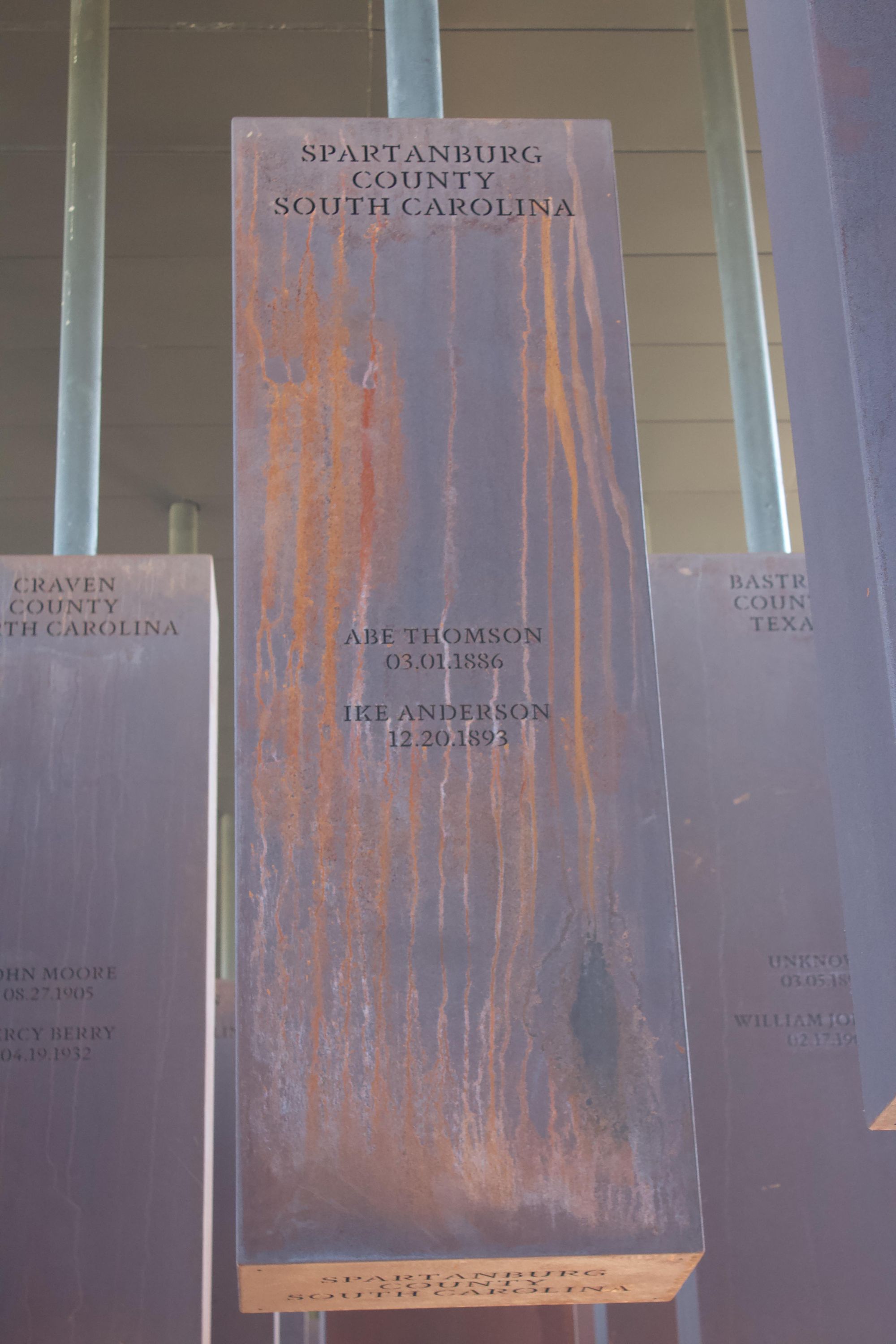
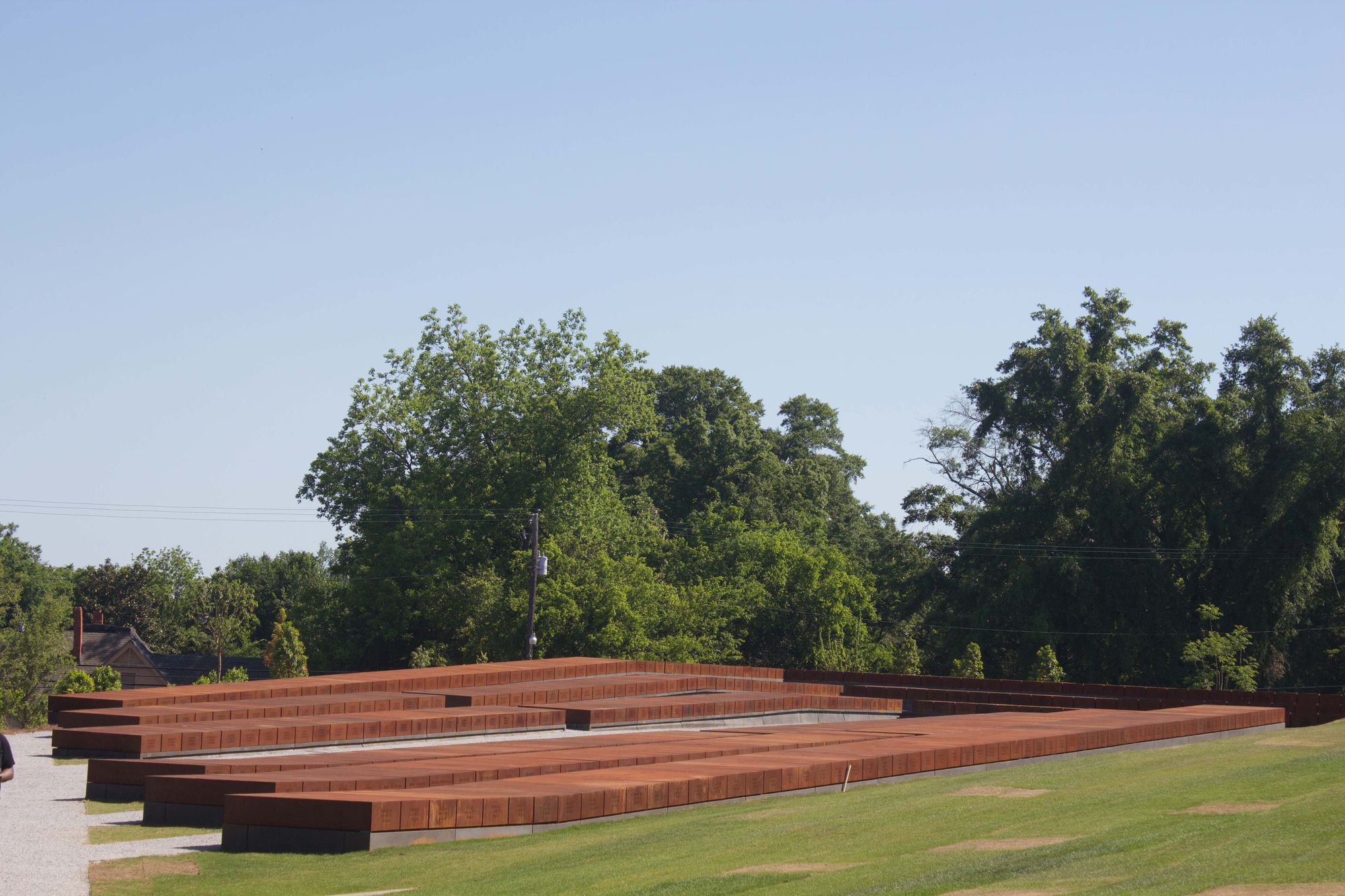
ADDITIONAL REFERENCES
If you'd like to support the work that Ellen and Feliccia are doing through the Remembrance Project of Greenville County, here's a donation link.
You can also check out the website to the Community Remembrance Project of Greenville County for videos of past events and for schedules of upcoming events.
You can also visit their Facebook Page.
Learn about the Tulsa Race Massacre.
Learn More about the Equal Justice Initiative.
Here's a link to my bookshop.org site, if you're interested in reading Bryan Stevenson's book, Just Mercy.
For those of you interested in reflecting more deeply and more broadly about reconciliation, following are some additional references:
The Reconciliation Poetry site. I especially enjoyed the essays on Three Practices: Awareness, Lament, Hope.
Also, Duke School of Divinity has great resources for a Christian view of reconciliation. They offer a Summer Institute of Reconciliation bringing together leading thinkers and speakers on the subject. This is broader than the notion of racial reconciliation, but it offers a deep dive on the concept of reconciliation which can be meaningful to us all at many different times.
GUEST BIOS
Feliccia Smith is a Professor of Business at North Greenville University. Her area of emphasis is Leadership and Organizational Change. She is passionate about battling inequality and injustice in our society. Feliccia is the Founder and CEO of Black Girl Justice Movement. She is a member of the Greenville NAACP. She is also the Co-Chair of the Community Remembrance Project of Greenville County, SC. Feliccia aspires to be a beacon in the legacy of Black Leadership.
Ellen Stevenson is “mostly retired” from her roles as a leadership and organization development consultant working with private, nonprofit and public-sector organizations. Her passion in the last 15 years has focused on nonprofit board excellence. Ellen currently serves as co-chair of the Community Remembrance Project of Greenville SC and as Board Chair for the Hispanic Alliance.
FULL TRANSCRIPT
-Introduction
Ame Sanders 00:11
This is the State of Inclusion podcast, where we explore topics at the intersection of equity, inclusion, and community. In each episode, we meet people who are changing their communities for the better and we discover actions that each of us can take to improve our own communities. I’m Ame Sanders. Welcome.
Today our focus is on racial truth and reconciliation. The Equal Justice Initiative in Montgomery, Alabama suggests that those are sequential actions. You must first have truth in order to have reconciliation. Sometimes truth telling requires remembering. Today I’m interviewing Dr. Feliccia Smith and Ms. Ellen Stevenson. They are co-directors of the Community Remembrance Project of Greenville County in South Carolina. Ladies, welcome to the State of Inclusion podcast. Thank you for joining us today. To start, why don’t you tell us a little bit about your work? What is the Community Remembrance Project and what do you do?
-About the Community Remembrance Project
Feliccia Smith 01:15
You know, the Community Remembrance Project is a deliberate act of remembrance. Our goal is to commemorate the victims of racial terror by hosting educational events, soil collection ceremonies, erecting historical markers, and ultimately bringing back our county monument from the Equal Justice Initiative in Montgomery, Alabama. You know, lynching has been an inherent part of our history and it’s something that many people don’t like to talk about. It is often obscured. It’s been left out of the history books. However, we want to bring awareness to lynching and our history of racial terror. We do that by commemorating the victims and trying to bring healing and restoration to our community.
Ellen Stevenson 02:20
This is Ellen. The only thing I would add to that is that this is a project that is done in collaboration with the Equal Justice Initiative in Montgomery, Alabama. They have the memorial to peace and justice, the museum that opened relatively recently, and their goal is to have all the communities that have experienced and have examples of this racial terror– lynching– to do this kind of remembrance. They are a key part in helping us to do this in a way that honors those that were victims and all of the people that were impacted as a result of those acts of terror.
Ame Sanders 03:06
So let’s pause here for a second. We’ve all referred to the Equal Justice Initiative in Montgomery, Alabama. Let me share a little bit about their work. They are a nonprofit founded by Bryan Stevenson. You may have heard of him or his book and movie, Just Mercy. It is the story about the early work of the EJI and one of their very first clients, Walter McMillian, who was a young Black man sentenced to die for a murder that he did not commit. The EJI continues their work on criminal justice reform, but in recent years they’ve also begun to focus on racial justice and educating the public. In Montgomery, Alabama, they have built a Legacy Museum where visitors learn about our country’s history of slavery from the beginning through the civil rights movement. They have also established the National Memorial for Peace and Justice. As Ellen was just saying, this memorial commemorates our country’s history of lynching, which was particularly violent during the Jim Crow era. The design of the monument includes artwork, space for reflection, and an open air pavilion were 806 foot monuments symbolize the thousands of racial terror lynchings victims in the United States and the counties and states where this terrorism took place. One aspect of the National Memorial for Peace and Justice is their notion of community remembrance and engagement. There is a very large area on the memorial site where duplicates of those six foot monuments are being held for communities to claim and to take home and display. I find this to be truly one of the most remarkable parts about this memorial. They encourage communities to take action, to acknowledge, own, and commemorate the history of what occurred in their own community, and at the same time linking their story to this larger national story. That is exactly the work that Felicia and Ellen and their team are doing in Greenville County. I will provide some pictures and details in the show notes for your reference. Please visit their facilities in Montgomery if you have the opportunity. You will surely be touched and changed by your visit as I was. So let’s get back to our conversation with Ellen and Feliccia. Ladies, I had the opportunity to attend your Say His Name community session that your team held back in 2019, where you commemorated George Green, who was lynched in Greenville County. It was a wonderful session. Very thought provoking, emotional, and sparked some great conversation amongst the participants there. I’ve also had the chance to watch some videos of your other remote sessions and in-person sessions that you’ve done. So how would you say your work is going in the community?
Ellen Stevenson 05:54
Well, I think we’ve managed to do well right after the George Green event that was very successful from our perspective. We had over 400 people there. It was well received, but then COVID hit, so we had to take a pause. But, we are back on track. We were able to do a soil collection ceremony for George Green. We had to limit the number of people because of COVID and held it outside. And we have had some virtual community conversations as well that have been well attended and I think very impactful. We have a full calendar planned out for the rest of this year to try to continue to do at least one event quarterly going forward to keep our work going. We have four victims in Greenville County. We had an educational program for Tom Keith and are planning the soil collection for Juneteenth (June 19th), and then the historical marker, hopefully in the third quarter of this year. All for Tom Keith.
Feliccia Smith 07:07
I’d just like to add that although COVID occurred and we like to say that we took a pause, the reality is that it gave us an opportunity to get some things together internally, an opportunity to build our leadership team, so that when the pandemic ends, we have things in place so that we can move forward in helping the community and educating the community. So yes, COVID did cause us to stop meeting in person. However, it didn’t prevent us from meeting virtually and getting some things in order. And just also being able to see some of the things that other organizations are doing as a result of the work that we’ve started here in Greenville County. For example, after we had the post traumatic slave syndrome online event, several churches began offering mental health services to their congregation as a result of that. We understand the trauma that all of this has caused and it continues to cause and it’s just very exhausting. But I’m glad to see that particularly churches in the Black community are taking a stance and giving their congregation the help that they so desperately need in the area of mental health and dealing with the trauma that we see every single day as a result of injustice after injustice, brutality after brutality, indignity after indignity. So I’m glad to see that those churches are taking a stance to provide the help that is so desperately warranted in the community
Ame Sanders 09:16
That is so encouraging to hear and it really speaks to the work that you’re doing. The work itself is impactful, but it starts ripples across the community that affect other organizations, individuals, and spawns other activities. It’s moving the whole community forward. When you take time to remember, reflect, memorialize, and address the trauma and pain that happened, even if it was long in the past, we know there’s plenty of pain going on still today. But even addressing the pain that was long in the past is important. Just like our bodies hold pain and injuries, I believe communities do too. And so we have to take the time to reflect on those and give them the attention they need and deserve before we can move forward. So just another simple question. Maybe this is for Feliccia to answer. How did you get started with this work?
-How Did You Get Started?
Feliccia Smith 10:06
Ellen and I got started together. We both were participants in the Diversity Leaders Initiative at Furman University and we had to do a capstone project. In doing the capstone project as a group we chose the Community Remembrance Project. We thought that perhaps we would memorialize one victim, George Green, and do a soil collection ceremony. However, in conversing with the Equal Justice Initiative, they wanted a group that was going to see this to the end. That meant that we were responsible for submitting a proposal, which they accepted, and they’ve been a great resource in helping us along the way. A lot of things we’ve had to charter and navigate ourselves. But this started as a project with Ellen and I. There were six other people. We began this process and we’ve just been moving ever since.
Ame Sanders 11:18
Well you guys have been moving. I also went through the Diversity Leaders Initiative at Furman University and so I’m pretty familiar with that program. One of the things that I remember they suggested was that your project should be about something you could do in about six weeks. I have to say, this isn’t a six week project, or even a six month project. This is a big commitment that you’ve made and your team has made for the community to stick with it and see it through. It speaks to a certain constancy of purpose and commitment. I really want to applaud you and your team for that. So we’ve talked about the duplicate community monuments that they have at the Memorial for Peace and Justice. I’m really interested in learning about the plan for Greenville to bring back our memorial. I just want to know if you guys have gotten far enough along to think about that.
Ellen Stevenson 12:11
We are absolutely working on that. But one of the requirements from EJI is that you first do an educational event, soil collection, and historical marker for each of the victims. So we cannot bring that memorial back until we’ve done all four of our victims. We are hoping that by the end of 2022 we will be ready to bring the memorial back. We actually have a committee right now working on part of this project and it’s made up of local artists, architects, construction people. They are collaborating to create a vision of what that memorial here should look like. We’re not just going to put this piece of iron and sit it out in the open. There’s a lot of thought and creativity going into how to create that same powerful place for people to come and reflect on what the meaning of that is. When we do the soil collection, soil jars are filled with soil from the site of the lynching and one is kept in our community and one is sent back to EJI. So we are also looking to place those soil jars in a place where people can continue to be engaged in conversation and understanding of this whole issue. All of those things are in process. We’ve identified tentative locations, but all of that has to go through approval, which we don’t have yet. So we’re not going to talk about it yet.
Ame Sanders 13:55
I grew up in Laurens County, South Carolina. So I live in Greenville County where you guys live, but I grew up as in Laurens County and there were 11 lynchings that have been documented by the Equal Justice Initiative. Some people say there were more in Laurens County. And at least two of those happened during my dad’s lifetime. As I’ve learned more about this, I’ve reflected on the fact that he never spoke of that and we never talked about it. I never learned it in school and we never reflected on that as a community that I know of. I would say generations of our white community have grown up either not being aware, or knowing, or consciously looking away (which I guess I would have to say my dad must have done) from our history of racial terror. Feliccia, during the soil gathering ceremony to memorialize the lynching of George Green, you spoke to the group and one of the things you said was, “The time is now to confront the truth of our past to heal the wounds of our present.” I thought that was such a powerful statement. I just wanted to ask you to comment a little bit on how looking back helps us both to heal from past wounds, but also helps us in looking forward.
-The Importance of Confronting History to Heal
Feliccia Smith 15:10
Thank you so much for bringing that up. When we talk about confronting our history and confronting our past, one of the first things that we have to do is acknowledge it. We understand that racial violence created anguish and it created trauma in our community. And it continues to do so today. It continues to contaminate race relations. If we’re ever going to move forward, we have to acknowledge our past albeit shameful, albeit painful. It’s the first step. As Bryan Stevenson said, it’s a sequential process. Before healing can take place, we have to be truthful about some things. Also, as we look at some of the manifestations of racism and bigotry today, the time is now we have to do a better job acknowledging that we have a problem. This is the problem. This is our history. And then, this is what we need to do in order to move forward. We have to speak truth to power. But before we can move forward, we have to acknowledge our past. Otherwise, it’s virtually impossible for us to move forward.
Ame Sanders 16:40
I know that it is impossible for us to move forward without healing from the things that have happened in our past. But also, as you’re saying, it’s so important for us to face what is going on today–what is happening around us right now every day in communities big and small all across the country. One thing I’m going to ask you both: who do you do this work for? What inspires you in choosing to do this work?
Feliccia Smith 17:07
Oh, wow. So for anyone who knows me, I am a Christian. And so my faith, my belief, I can’t separate the two because one of the things that we know, that we understand is that Jesus came back for the oppressed. He was concerned about the downtrodden. He was concerned about creating justice for all people. And so for me, as a Christian, being a Christian is a political stance. I can’t separate that from who I am. So I do it, because I am charged with that from my faith. Also, I am a Black female. I have been a victim of racism, discrimination, institutional racism. I also have two, Black grandchildren–boys. And so I’m definitely concerned about the plight that we’re in. Just seeing so many of my people–Black and brown people–who are victims of oppression, that is very tiresome. It’s exhausting. I’m just ready for us to move forward. Not only did the racial terror lynching harm the Black community, but it also harmed the white community as well. If you look at any of the pictures where you had lynchings, then you would see entire families there with their children. We have to think about the impact that it had on their children and the legacy of white supremacy that has been left and the legacy of trauma that has propagated the Black community. So, I do this because it’s the right thing to do. I do it because I know this is what my faith requires. I can’t separate the two and I do it because I want to see a just world for everyone.
Ame Sanders 19:23
Ellen, what about you? What drives you to do this work?
-This Work Changes You
Ellen Stevenson 19:26
My whole professional life and my personal life, I have felt called to work to make things better for other people. To make the world a better place and to make the community a better place. And I’ve touched that in many different places. I was attracted, as Feliccia told you how we started this project, when I was engaged with the Diversity Leaders Initiative. We went to a presentation from the Equal Justice Initiative that told us about this Community Remembrance Project and I immediately felt like this was such a powerful way to address some important issues in our community. I was very excited about the possibility of engaging with it. It’s challenging work. It’s hard work. It’s caused me to look at myself in very different ways than I have before. So I like that about it too, because it’s work that makes me look at myself and my community, in relation to this whole issue of inequality, injustice, and inequities, that our society is confronting hard right now. It’s also rewarding to be part of the process to try to open some eyes in our community.
Ame Sanders 20:56
I’m really glad that you brought that up and how it’s touched you personally as you’ve gone through this work, because at State of Inclusion, we feel like the most important step on the journey to a more inclusive and equitable community and world is to start with ourselves. We also have to be willing to examine ourselves, our own history, our own biases, hurts that we may have, or people that we may have hurt. I’d like to also open it up to Feliccia, or any more comments that you might have Ellen, in terms of how this work might have impacted you.
-"I Can't Get Tired"
Feliccia Smith 21:31
As I think about this it’s my lived experience. When I do this, I know that I can’t get tired. I’m standing on the shoulders of many who have come before me. So I can’t dare forget the work that has been done. I want to see a world where people are treated fairly, where there is justice, where there is equality. So there are often times that I make sacrifices. I don’t get to say, “Well, I’m not going to jump into this fight today. I’m not going to participate in this or participate in that” simply because this is who I am. It’s my lived experience. It’s the life that I’m living now. But it is challenging. Some days I think, “Oh my goodness, I’m just tired. I’m exhausted.” But the fight has to continue. There have to be people who are committed to seeing this out to the end until we reach parity. We don’t want charity, we want parity. We want justice. And we recognize that justice is something that we all deserve and righteous, steadfast love. Those are things that propel me forward. So again, this is the life that I live. It’s the experiences that I go through every single day and people who look like me every single day. So I have to be a voice for the voiceless. I have to speak out against oppression. As tired as I am, the work doesn’t stop.
Ame Sanders 23:35
That’s some powerful motivation. And I just want to say it’s all of our work, to make the world a better place and to move past racial differences that we have and to find, as you’re saying, parity, inclusion, and equity for our communities and for our country. But I’m personally really glad that you, Feliccia and Ellen, have both chosen to commit to this remembrance project because I do think it has a great impact for our community. So Ellen, I’d like to ask you this: for our listeners, let’s say you’re back at home and you’re listening to this, and you think, “My community needs to do this. I need to learn more about this and I need to do this.” What would you tell communities? What would you tell people in communities where there are remembrance projects like ours? What can they do to help a project like that move forward? Or even if they don’t have one already going on in their community, how can they get started?
-Support from the Equal Justice Initiative
Ellen Stevenson 24:34
Getting started is the hard part. Well, it’s all hard. As Feliccia mentioned, we had a group already that were all excited about this idea of the Community Remembrance Project. The Equal Justice Initiative pushed back to us and said, “You’ve got to form a coalition in your community to do this work and need to represent the full community.” One of the things our initial DLI group had to do was reach out beyond our group, which we were already starting to do, and invite other people in to do the work with us. That sounds maybe simpler than it is. We had no trouble finding people that were interested, but bringing those people together, organizing that work, trying to build relationships across the culture differences, recognizing some of the white power unspoken and unrecognized, and creating balance in coalition team. As Feliccia said, we spent some time as a leadership team really working through that. Again, there were some great guidelines from EJI to help us put in place some of our thoughts and our goals and how we want it to work together and our values that helped that coalition form into a strong leadership team. For anybody in the community that wants to get involved, we have subcommittees of our leadership team that are working on various aspects of each of the events that we put on. If there are folks that want to get involved in that they can certainly join those committees or find ways to engage. Just attending the events and bringing people with them is an important piece, because the more people that learn about this work and engage in this work, the better the impact.
Feliccia Smith 26:44
I would also add that if you’re not in the Greenville area and you’re interested in starting a Community Remembrance Project, one of the things that you can do is contact the Equal Justice Initiative and they will put you in contact with perhaps a representative or someone who is already starting to do that work. Or maybe you’re going to be that catalyst for change in that community, and they certainly have resources to help you get started. A lot more resources than when we began this process. They have certainly evolved over the last two years, and there are a plethora of resources available. I would also say make sure that your community is ready for this type of challenge. So even before delving into this, perhaps have some type of initial meeting, an interest meeting, to see if people are open to having this in their community. Because it is a lot of hard work. It’s going to challenge what you have been accustomed to. It’s going to challenge your history. It’s going to challenge everything that you thought you knew about America and its history. So be prepared for that, again, just making sure that your community is open to embarking upon this type of journey.
Ame Sanders 28:23
It’s great to know that we’re not alone in this work and that the Equal Justice Initiative is there for resources for communities who want to move forward. Your comments about making sure that the community is ready to embrace this is really important as well. To take time to understand what else is going on in your community, both positive and negative and to understand how this would fit into the other initiatives that might be underway is very important. What’s next for your work?
-Commemorating the Four Victims from Our Community
Feliccia Smith 28:51
Right now we are working to commemorate the four victims. We have already commemorated George Green through an educational event as well as a soil collection ceremony. We’re working to get a historical marker erected for him. We’ve had an event for Tom Keith and on Juneteenth, we will have a soil collection ceremony. Hopefully on August 16, which is the anniversary of Tom Kaith’s lynching, we’ll have the historical marker ceremony for that. Then we’re working on Ira Johnson as well as Robert Williams. Both of those individuals were stolen out of jail and lynched. So we will hope to have some type of combined event for those individuals, commemorate them, and then lead into our culminating event which is to receive our monument from the National Memorial for Peace and Justice. Ellen, you want to add something?
Ellen Stevenson 30:08
One of the things that the Equal Justice Initiative asks us to do is have an essay contest that engages the high school students across the county. We have a committee that will be initiating that in the Greenville County School System this fall. It will take the 2021-2022 school year. Working with history teachers and English teachers, they will engage, hopefully, a good number of students to write essays. EJI actually does the judging of the essay contest and then we will award scholarships to the winners. The Equal Justice Initiative provides some of the funding for that and we plan to try to raise additional funds so that we can have more scholarships. I think it’s a great addition to start getting kids in school talking about it. In that way, it also engages all the teachers, hopefully, in beginning to tell the story of this history, maybe in ways that haven’t been told before. It hasn’t been part of the curriculum. We have a couple of teachers and educators working on that committee. That’s a lot of a lot of work coming up. We’re very excited about it.
Ame Sanders 31:28
Felicia, first, I’m glad that you said the names of each of the individuals that were lynched in Greenville County. It’s important that we take a few minutes and acknowledge them as individuals and the lives that were lost. Ellen, to your point, it’s also important to engage students in this work. Just like I said earlier, I wasn’t taught this in school. I didn’t talk about it with my parents, my father who had lived through some of it. I think it’s a terrible injustice when we don’t see the breadth of our history and understand, as you say, Feliccia, the terror that existed. The intentional terror that was inflicted on the Black community. Kids today should be encouraged to learn, reflect, and discuss this aspect of our history. It’s going to be really helpful for them to have their teachers and their parents along with them to help them understand and to also place this in context of what’s happening around them today. I can see why this essay contest is an important part of your work that you’re doing as well.
-Reaching Out to the Families of Victims and Perpetrators
Ame Sanders 32:33
I’d like to take a second and touch on one aspect of the work that you’ve been doing. When I attended the Say His Name Memorial session for George Green, I was touched to see his great granddaughter, Maxine Morani (spelling) there. I also saw her on the video for the soil collection ceremony. In listening to her speak, she reminded us this. I’m gonna try to quote her here. She said, “It’s not far from a rope around the neck to a knee on the neck.” That was a stark reminder about why this work is so important now. So I wish you guys would speak up a minute about how you’re reaching out to the descendants of the lynching victims and including them in these events.
Feliccia Smith 33:18
So not only are we including the descendants of the victims, but to the extent possible, we are reaching out to the descendants of the perpetrators, because we think that is such an important part of the healing process. And of course, some of these lynchings took place a very long time ago, and so retrieving those records has been very difficult. We’ve placed ads in the newspaper. We’ve gone to the communities in which those individuals resided. So again, not only are we reaching out to the descendants of the victims, but the perpetrators as well. And to your point of why now, we’re in some very tumultuous and challenging times. We’re very divisive. There’s a lot of inequality and systemic racism and oppression that still exists. At the end of the day, we can no longer ignore what is taking place around us. As white America can no longer be complicit, Black America can no longer be quiet about the injustices that we live through every single day. If we’re going to move forward, it’s going to take all of us. As Dr. Martin Luther King Jr. said, “Injustice anywhere is a threat to justice everywhere.” We have to live out that. We have to hold America accountable for ensuring that we all have rights guaranteed to us–those inalienable rights. The right to life, liberty, and the pursuit of happiness. We have to hold them to the fire on that. So the time is now. Progress has been made, but the progress has not been as quickly as it should have been. At what point do we say, enough is enough? And I think we’ve reached that point where we’ve said, enough is enough.
Ame Sanders 35:40
I would totally agree with you that we have reached that point. We’ve passed that point. I think the time is now. Millions of people would agree with us on that. We’ve seen many demonstrations and lots of voices today talking about this. But as you guys are examples for the community, it is work to make these changes. Demonstrations are important and they’re part of awareness and of being able to speak your truth to power as you said, Feliccia, but making systemic and long term changes is work. It requires organizing and actions over an extended period of time, constancy of purpose and commitment, by groups like your group and by people like you. So is there anything else that either of you would like to say that we haven’t had a chance to talk about or that you want to add that you haven’t had a chance to say?
-Commemorating Tulsa Race Massacre
Feliccia Smith 36:38
Yes, on May 31st, the Community Remembrance Project will commemorate the centennial of the 1921 Tulsa Race Massacre at 7:30 pm at the Phyllis Wheatley Association in Greenville. We will be sending out a save the date. You can find that information on our website as well as our Facebook page. The 1921 Tulsa Race Massacre was perhaps the most atrocious crime of racial terror in the history of the United States where for that 18 to 24 hour period more than 300 lives were lost. We want to commemorate the centennial of that event on May 31.
Ame Sanders 37:50
Thank you for telling us about that and thank you for doing the commemoration of that. I will tell you, personally, when I went to the Memorial for Peace and Justice in Montgomery, I did not know about that event until I went there just a couple of years ago. I was not aware that that had occurred and I did not realize how many people were killed during that event and how horrific it was. So I think it’s important to commemorate that and to share that with people to give a sense of how horrible those times were and how a community could inflict that kind of pain on a part of itself. So Feliccia, I just want to say thank you for sharing that information with us. So it’s probably time for us to wrap up. And I just want to sincerely thank you both for being here today and talking with me about the Remembrance Project of Greenville County. I was excited about your work before I met you and before I talked to you, and I’m even more excited about the work now. I’m also excited about the fact that the Equal Justice Initiative is supporting this work across the country. It’s heartening to me to know that my community and other communities all across the country are tackling this very important work of truth and reconciliation to help their communities move forward into healing. In the show notes to this session, I’ll put some information about the Community Remembrance Project in Greenville County. It’ll include information about upcoming events that they have planned on their website and a link for donations if you’d like to contribute to the work that Feliccia and Ellen are doing. I’ll also include some links and photos about the EJI and the work that they’re doing.
-Conclusion
Ame Sanders 39:39
For those of you who are on this journey to make your communities more inclusive and equitable, there’s also a section of my website where I’ve mapped out a framework for change. The things we’ve discussed today are great examples of how Ellen and Feliccia are contributing to two aspects of that framework within their community, my community. Their community events that they’re doing as part of this Remembrance Project are building a foundation of trust, dialogue, and respect. They are also fostering an inclusive community culture by helping their community learn about and memorialize our shared history. So you can see a Community Remembrance Project is a great way that we can work to build a more inclusive world, one community at a time. This has been the State of Inclusion podcast. Join us again next time, and if you enjoyed this episode, the best compliment for our work is your willingness to share these ideas with others. Thanks so much for listening.
CONTRIBUTORS
Guests: Dr. Feliccia Smith and Ellen Stevenson
Host: Ame Sanders
Social Media and Marketing Coordinator: Kayla Nelson
Podcast Coordinator: Emma Winiski
Sound: FAROUT Media


